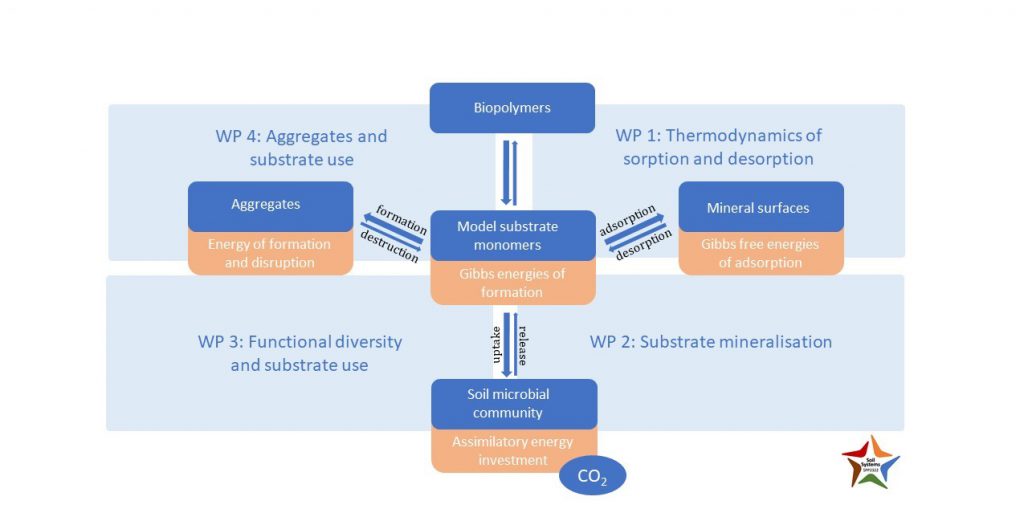Sorption thermodynamics and aggregation as controls of substrate use and mineralization

Sorption strength of organic molecules to minerals and the stability of aggregates protecting organic substrates are among the boundary conditions that shape the channel for energy and matter used by the microbial community in soils. Although the stabilization of organic matter against microbial use and mineralization in soil has been linked to sorption, its relationship to the thermodynamics of sorption processes has not been quantified so far. Furthermore, the impact of soil aggregation and soil microbial diversity on this relationship is unknown. To analyze these boundary conditions, we will test the following hypotheses:
(H I) sorption and desorption energies increase with increasing polarity and degree of oxidation of the sorbate and increasing number of surface hydroxyl groups of the sorbent,
(H II) microbial substrate use decreases with decreasing Gibbs free energies of sorption, increasing thermodynamic sorption hysteresis and activation energy of desorption with thermodynamic thresholds for the use of sorbed substrates,
(H III) thermodynamic thresholds for microbial use of sorbed substrates increases with increasing functional diversity of the soil microbial community and
(H IV) high physical protection of substrates within aggregates undermines the importance of sorption thermodynamics for microbial substrate use.
We will be determining Gibbs free energies of sorption reactions, sorption enthalpies and entropies, activation energies of desorption reactions and losses of molar free energy due to sorption hysteresis based on studies with 14C-labelled model substrates and model minerals.
Furthermore, we will use miniaturized incubation experiments with SPP soil samples to determine use and mineralization of labelled model substrates adsorbed to model mineral mixed into SPP soils. We will also investigate the role of functional diversity in mineralization by a second incubation experiment with SPP soils spiked with extracted microbes to manipulate microbial diversity or nutrients based on enzymatic analyses. Finally, the mineralization of selected labelled model substances adsorbed to dispersed and aggregated soil systems that were characterized morphologically and physically will be measured. Combining the expected results, our project will deliver essential insights for the integration of sorption processes and aggregation into thermodynamic concepts of soil ecosystem functioning and development.
Link to English scientific abstract
Link to German scientific abstract